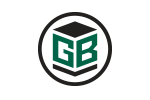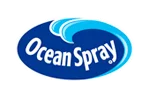Quality Re-Imagined
How do you solve the quality problem? The answer will surprise you: Stop thinking of it as a problem. Quality seems to be a never-ending fight for manufacturers, regardless of industry. Systems for tracking quality data are often seen as burdensome, frustrating operators and production professionals with an endless list of time-consuming tasks: data that … Continued
ASQ WORLD CONFERENCE ON QUALITY & IMPROVEMENT
How To Digitize Your End-To-End Food & Beverage Supply Chain
Supply chain constraints, changing consumer preferences, traceability requirements, new government regulations, and the national labor shortage have had significant impacts on the food and beverage supply chain. To address roadblocks, smart companies are investing in technology that helps them do more with less, address current disruptions, and plan for the future. Working with Advantive … Continued
How Advantive’s Resources Bolster InfinityQS’ Enact Updates
On July 06, 2023, the Advantive team unveiled the latest Enact update from InfinityQS, featuring user experience changes designed to cater to customer needs and deliver immediate value. The update introduced the following: Issues surrounding sampling requirement reliability surfaced as the size and scale of customer implementations grew. This latest Enact release minimizes the opportunities … Continued
2023 Quality Magazine Webinar
2023 Quality Digest Webinar
Book a Demo
Try a free demo of InfinitiQS and see why we are the established market-leading provider of global provider of Statistical Process Control (SPC) software solutions for manufacturing optimization.

Experience The Difference
Try a free demo and see why we are the established market-leading provider of purpose-built software for specialty manufacturing and distribution companies around the globe.
Optimize Manufacturing Performance
InfinityQS solutions help you improve quality, processes, and compliance across lines, sites—or the entire enterprise.

SPC DEMO
Don’t miss out! Book a demo of our specialized SPC software and unlock immediate improvements in your processes.
Maximize Efficiency Across Your Manufacturing Processes and Operations
Gain visibility into quality, process capabilities, and variations to reduce waste, scrap, and rework; improve yield and utilization; and make your plant floor operations more productive.
Monitor supplier quality
To make a great product, you need great materials. Supplier delays or raw material interruptions can spell disaster to your production timeline. With InfinityQS®, you can analyze the quality and consistency of your raw materials and suppliers as well as your finished product.
Capture quality data from across the enterprise
Ditch the paper, spreadsheets, and manual data entry. Consistent, reliable data is the bedrock of manufacturing optimization. With InfinityQS, you can automate collection of process and quality data from across your plants and manufacturing lines. And when data is centralized and unified, you get anytime, anywhere access to information from any process or site.
Optimize & standardize processes
When you understand the capability of your systems and processes, you can optimize their quality and performance. InfinityQS solutions provide the means to access that insight—across one line, an entire site, or multiple sites. Access historical data to see trends over time and more easily track down process issues before they become serious problems.
Accelerate data analysis
Automated data collection and aggregation make analysis of your enterprise-wide data faster and easier. Add flexible, automated reporting capabilities and the advice of our expert analytical experts, and you’ve got unbeatable insight into your operations.
Improve decision making
The ability to analyze historical data from all your processes and product lines—true enterprise visibility—gives you unprecedented operational insight. Feeds, speeds, temperatures, weights—get all the metrics you need to make strategic decisions.
Unify data for universal access
With InfinityQS, all your data is stored in a central, unified location rather than in separate data silos spread across the enterprise. As a result, processes and quality are in control—and data analyses are more comprehensive and complete.

Mid South Baking Company
Easy to start. Easy to expand.
Enact empowers you to quickly realize the benefits of digital data collection and analysis. Start today with:
- Five Enact licenses: add more as needed
- Quick Setup wizard: your guide to configuring data collections
- Video tutorials and easy-to-use help: available in our Guided Learning Center
- Flexible expansion: reconfigure your licenses, add licenses, integrate with other manufacturing systems, and move to automated data collection—at any time



















